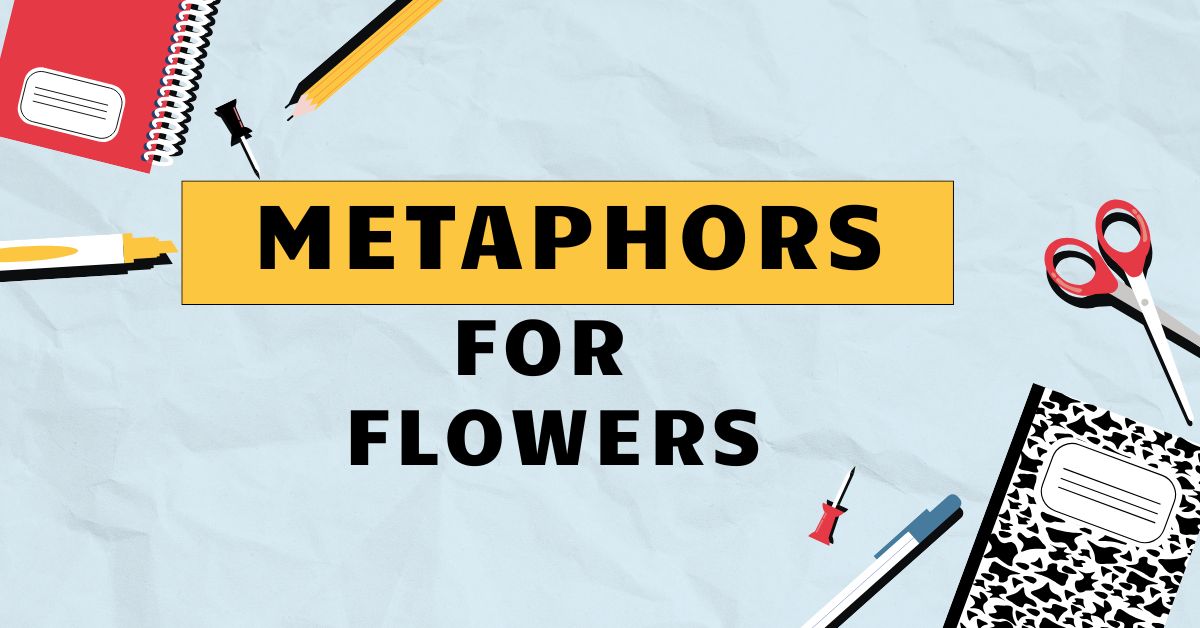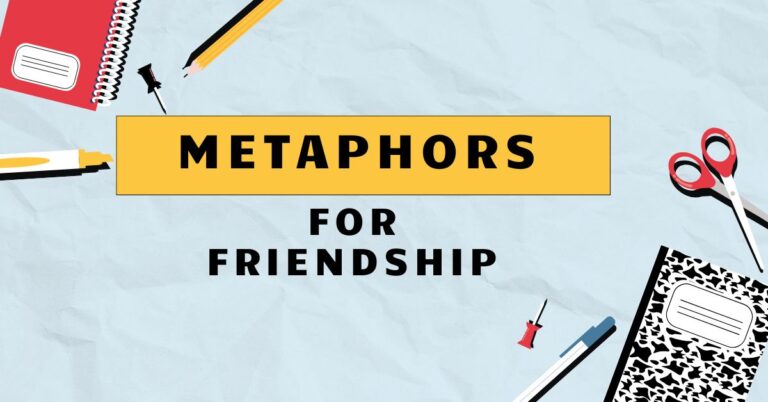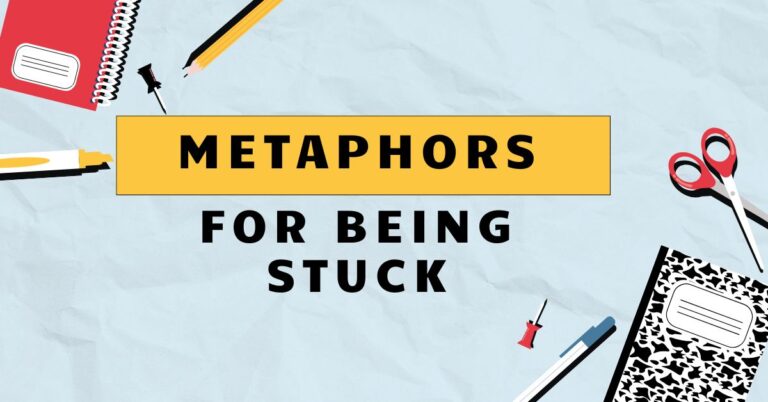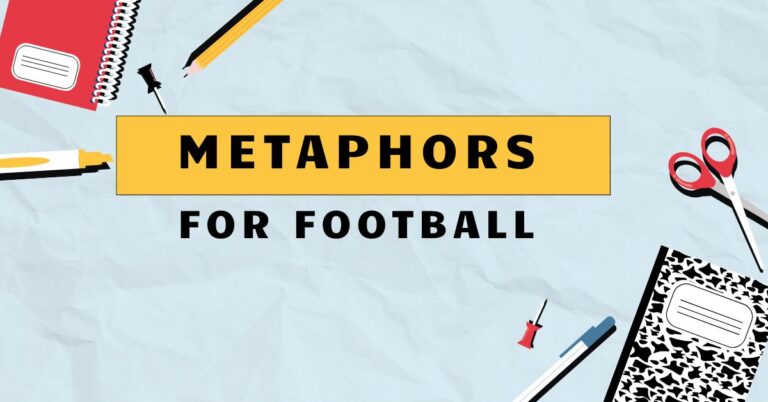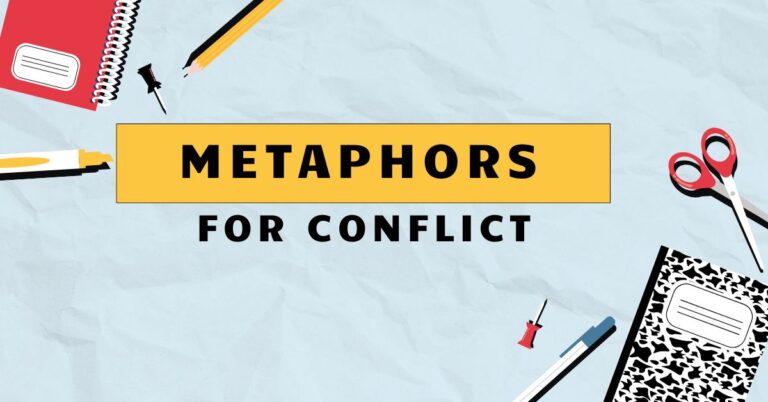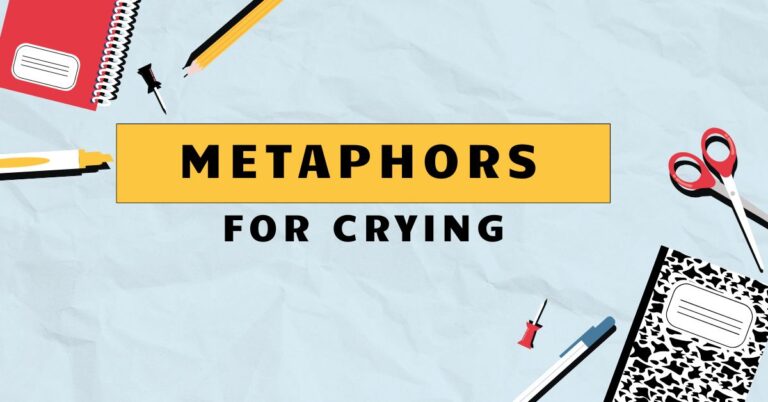39+ Metaphors for Flowers: A Comprehensive Guide
Metaphors enrich our language, adding layers of meaning and vivid imagery to our descriptions. Understanding metaphors, particularly those related to flowers, enhances comprehension and expressive skills.
This article delves into the world of floral metaphors, explaining their structure, function, and diverse applications. Ideal for English language learners, writers, and literature enthusiasts, this guide offers a comprehensive exploration of how flowers serve as powerful metaphorical tools.
By mastering the art of using floral metaphors, you can elevate your communication, making it more engaging and evocative. This guide provides numerous examples, practical exercises, and insightful explanations to help you confidently incorporate these metaphors into your writing and speech.
From basic concepts to advanced applications, this guide ensures a thorough understanding of metaphors involving flowers.
Table of Contents
- Introduction
- Definition of Metaphor and Floral Metaphors
- Structural Breakdown of Floral Metaphors
- Types of Floral Metaphors
- Examples of Floral Metaphors
- Usage Rules for Floral Metaphors
- Common Mistakes When Using Floral Metaphors
- Practice Exercises
- Advanced Topics in Floral Metaphors
- Frequently Asked Questions
- Conclusion
Definition of Metaphor and Floral Metaphors
A metaphor is a figure of speech that directly compares two unrelated things without using “like” or “as.” It asserts that one thingisanother, creating a relationship based on shared characteristics or qualities. Metaphors are crucial in language for conveying complex ideas, adding depth to descriptions, and making abstract concepts more concrete and relatable.
They allow writers and speakers to paint vivid pictures in the minds of their audience, enhancing engagement and understanding.
Floral metaphors specifically use flowers and their attributes to represent other concepts, emotions, or characteristics. Because flowers are often associated with beauty, fragility, growth, and love, they provide a rich source of metaphorical imagery.
These metaphors can be found in literature, poetry, everyday conversation, and various forms of art, adding layers of meaning and emotional resonance. For example, comparing a person to a “delicate rose” suggests beauty and vulnerability, while referring to someone’s potential as a “budding flower” implies promising growth and development.
Structural Breakdown of Floral Metaphors
Floral metaphors consist of two main elements: thetenorand thevehicle. The tenor is the subject or concept being described, while the vehicle is the flower or floral attribute used to represent it.
The effectiveness of a metaphor depends on the shared qualities or associations between the tenor and the vehicle. Understanding this structure helps in analyzing and creating compelling metaphors.
Consider the metaphor “She is a blooming flower.” Here, “she” is the tenor, representing a person, and “blooming flower” is the vehicle, representing beauty, growth, and vitality. The connection lies in the shared characteristic of flourishing and thriving.
The metaphor works because flowers in bloom are typically seen as vibrant and full of life, mirroring the positive qualities attributed to the person.
The structure can also be more complex, involving implicit comparisons or extended metaphors. An extended metaphor develops a comparison over several lines or even an entire piece of writing, deepening the metaphorical connection and exploring multiple facets of the relationship between the tenor and the vehicle.
Recognizing these structural elements is essential for both interpreting and constructing effective floral metaphors.
Types of Floral Metaphors
Metaphors for Beauty
Flowers are frequently used to symbolize beauty due to their aesthetic appeal and vibrant colors. These metaphors often describe physical attractiveness or inner beauty, emphasizing qualities such as grace, elegance, and radiance.
The specific type of flower used can further refine the meaning, with roses often representing classic beauty, lilies symbolizing purity, and orchids conveying exotic allure.
Examples include comparing someone’s smile to a “sunflower” for its brightness and warmth, or describing a person’s complexion as “rosy” to highlight their health and vitality. These metaphors evoke a sense of admiration and appreciation, enhancing the descriptive power of the language.
The choice of flower in the metaphor can also reflect cultural or personal preferences, adding layers of nuance to the comparison.
Metaphors for Fragility
The delicate nature of flowers makes them apt symbols of fragility, vulnerability, and impermanence. These metaphors often describe delicate situations, sensitive emotions, or the transient nature of life.
The image of a wilting flower can represent decline, decay, or the loss of innocence. Flowers like cherry blossoms, known for their brief blooming period, are particularly effective in conveying transience.
Using a flower to represent fragility can add emotional depth to writing, evoking empathy and understanding. For instance, describing a relationship as a “tender blossom” suggests that it requires careful nurturing and is susceptible to damage.
Similarly, comparing a person’s spirit to a “bruised petal” highlights their vulnerability and the need for compassion. These metaphors tap into the universal understanding of flowers as symbols of delicate beauty.
Metaphors for Growth
Flowers, with their life cycle from seed to bloom, are powerful symbols of growth, development, and potential. These metaphors often describe personal progress, new beginnings, or the unfolding of opportunities.
The image of a budding flower represents promise and anticipation, while a blooming flower signifies fulfillment and achievement. The specific type of flower can also suggest the nature of the growth, such as resilience (dandelions) or ambition (sunflowers).
Metaphors for growth can be used to inspire and encourage, highlighting the potential for positive change and development. For example, describing a young artist as a “budding talent” suggests that they have promising skills that are yet to fully blossom.
Similarly, comparing a new business venture to a “seedling” emphasizes the need for careful cultivation and nurturing. These metaphors emphasize the dynamic and evolving nature of life.
Metaphors for Love
Flowers, especially roses, have long been associated with love and romance. These metaphors often describe the intensity, beauty, and complexity of romantic relationships.
Different types of flowers can represent different aspects of love, such as red roses symbolizing passionate love, white lilies representing purity and innocence, and forget-me-nots representing remembrance.
Using floral metaphors for love can add a poetic and emotional dimension to expressions of affection. For instance, comparing a lover to a “rose garden” evokes images of beauty, fragrance, and abundance.
Similarly, describing a relationship as a “bouquet” suggests a harmonious blend of different qualities and experiences. These metaphors capture the multifaceted nature of love, from its tender beginnings to its enduring strength.
Metaphors for Transience
The fleeting beauty of flowers makes them potent symbols of transience and the ephemeral nature of life. These metaphors often describe the temporary nature of joy, beauty, or youth.
The image of a fading flower can represent the passage of time, the loss of innocence, or the inevitability of decay. Flowers like cherry blossoms, which bloom briefly, are particularly effective in conveying this sense of transience.
Using floral metaphors to express transience can add a poignant and reflective tone to writing. For example, describing a moment of happiness as a “fleeting bloom” acknowledges its beauty while also recognizing its impermanence.
Similarly, comparing youth to a “spring flower” highlights its vibrant energy while also suggesting its eventual fading. These metaphors encourage a deeper appreciation of the present moment and the transient nature of existence.
Examples of Floral Metaphors
Here are several examples of floral metaphors, categorized by the qualities they represent. These examples illustrate the diverse ways in which flowers can be used to add depth and meaning to language.
Examples for Beauty
The following table provides examples of floral metaphors used to describe beauty, highlighting the specific flowers and the qualities they evoke.
| Metaphor | Explanation |
|---|---|
| Her smile was a sunflower in the garden of faces. | The smile is bright, warm, and uplifting, like a sunflower. |
| She was a rose among thorns, beautiful despite her harsh surroundings. | She possesses exceptional beauty even in difficult circumstances. |
| His words were orchids, exotic and captivating. | His words are unique, intriguing, and hold a special allure. |
| Her skin had the delicate bloom of a peach blossom. | Her skin is soft, fresh, and subtly beautiful. |
| She moved with the grace of a water lily on a serene pond. | Her movements are elegant, fluid, and peaceful. |
| His eyes were like violets, deep and captivating. | His eyes are a rich, alluring color. |
| She was a gardenia in full bloom, exuding elegance and grace. | She is completely radiant and refined. |
| Her laughter was like the tinkling of bluebells in the breeze. | Her laughter is light, joyful, and melodious. |
| She possessed the quiet beauty of a snowdrop in winter. | She embodies a simple, understated elegance. |
| He was drawn to her like a bee to a honeysuckle. | He is deeply attracted to her beauty and sweetness. |
| She had a radiant aura, like a field of daffodils in spring. | She exudes a bright and cheerful presence. |
| Her voice was as soothing as the scent of lavender. | Her voice is calming and comforting. |
| She was like a lotus flower, rising beautifully from murky waters. | She overcame adversity to achieve great beauty and purity. |
| She had the charm of a daisy, simple and pure. | She possesses a natural, unpretentious charm. |
| She was a vibrant poppy in a field of green. | She stood out with her bold and striking beauty. |
| Her style was as timeless as a classic rose. | Her style is elegant and always in fashion. |
| She carried herself with the regal poise of an iris. | She possesses a dignified and graceful demeanor. |
| Her spirit was as bright and cheerful as a marigold. | She has a sunny and optimistic disposition. |
| She was a rare bloom in an ordinary garden. | She is unique and exceptionally beautiful. |
| Her presence was refreshing, like a field of lilies in the morning. | Her presence is pure, serene, and revitalizing. |
| Her hair cascaded like golden wisteria. | Her hair flows down in a beautiful, abundant manner. |
| She was a delicate blossom in a harsh winter. | She is fragile and beautiful in difficult circumstances. |
| Her influence spread like morning glories, gently and beautifully. | Her impact is pervasive and subtly beautiful. |
| She was a sunflower, always turning towards the light. | She is always optimistic and seeks positivity. |
Examples for Fragility
The following table provides examples of floral metaphors used to describe fragility, highlighting the vulnerability and delicate nature of the subject.
| Metaphor | Explanation |
|---|---|
| Their relationship was a tender blossom, easily bruised. | The relationship is delicate and vulnerable to harm. |
| His heart was a wilted rose, bearing the scars of past hurts. | His heart is damaged and weakened by previous pain. |
| Her dreams were fragile petals, easily scattered by the wind. | Her dreams are delicate and easily disrupted by external forces. |
| Her spirit was like a bruised petal, barely clinging to life. | Her spirit is weakened and struggling to survive. |
| The peace treaty was a delicate flower, requiring constant care. | The peace treaty is fragile and requires careful maintenance to avoid collapse. |
| His confidence was like a thin-stemmed tulip, easily broken. | His confidence is weak and easily shattered. |
| Her hope was a fragile seedling, needing protection from the storm. | Her hope is delicate and needs safeguarding against difficulties. |
| His health was a delicate bloom, requiring constant attention. | His health is frail and needs careful management. |
| Their love was a fragile orchid, demanding specific conditions to thrive. | Their love is delicate and needs very specific circumstances to flourish. |
| The economy was a tender shoot, vulnerable to recession. | The economy is weak and susceptible to economic downturn. |
| Her trust was a fragile daisy, easily trampled. | Her trust is delicate and easily betrayed. |
| His joy was a fleeting bloom, quickly fading away. | His joy is temporary and soon disappears. |
| His faith was a fragile snowdrop, vulnerable to the harsh winter. | His faith is delicate and susceptible to challenging times. |
| Her sanity was a delicate poppy, easily disturbed. | Her sanity is fragile and easily upset. |
| His patience was a fragile violet, easily crushed. | His patience is delicate and easily exhausted. |
| His reputation was a fragile blossom, easily tarnished. | His reputation is delicate and easily damaged. |
| The secret was a fragile bud, easily revealed. | The secret is delicate and easily disclosed. |
| Her smile was a fragile daffodil, wilting in the heat. | Her smile is delicate and fading under pressure. |
| His courage was a fragile lily, bending in the wind. | His courage is delicate and wavering in adversity. |
| The friendship was a fragile anemone, easily uprooted. | The friendship is delicate and easily broken. |
| Her understanding was a fragile hyacinth, easily misunderstood. | Her understanding is delicate and easily misinterpreted. |
| His art was a fragile iris, easily criticized. | His art is delicate and easily subjected to criticism. |
| The negotiation was a fragile peace lily, requiring gentle handling. | The negotiation is delicate and requires careful management. |
| His ego was a fragile orchid, easily offended. | His ego is delicate and easily hurt. |
Examples for Growth
The following table provides examples of floral metaphors used to describe growth, highlighting the development and potential of the subject.
| Metaphor | Explanation |
|---|---|
| She was a budding scholar, full of potential. | She is a promising student with untapped abilities. |
| His career was blossoming like a field of wildflowers. | His career is thriving and showing great progress. |
| Their ideas were seedlings, waiting to sprout. | Their ideas are new and have the potential to develop. |
| The company was a growing vine, reaching for new heights. | The company is expanding and striving for greater success. |
| His understanding of the subject was blooming like a rose. | His comprehension is developing beautifully and fully. |
| Her confidence was sprouting like a daffodil in spring. | Her confidence is emerging and growing stronger. |
| His talents were unfolding like the petals of a lotus. | His talents are gradually revealing themselves. |
| Their project was germinating, slowly but surely. | Their project is starting to develop and progress steadily. |
| Her knowledge was expanding like a garden in springtime. | Her knowledge is increasing rapidly and abundantly. |
| His influence was spreading like morning glory, reaching far and wide. | His influence is expanding extensively and impacting many people. |
| His leadership was blossoming, inspiring those around him. | His leadership is developing, motivating his followers. |
| Her potential was a seed, waiting for the right conditions to grow. | Her potential is latent, needing a favorable environment to develop. |
| Her determination was a sunflower, always reaching for the sun. | Her determination is strong, constantly striving for success. |
| His dreams were unfolding like a night-blooming cereus. | His dreams are rare and gradually revealing themselves. |
| Her skills were budding like a rose, promising beauty and fragrance. | Her skills are developing, promising excellence and value. |
| His enthusiasm was a growing vine, climbing towards success. | His enthusiasm is increasing, driving him towards achievement. |
| Her capabilities were sprouting like wildflowers after the rain. | Her capabilities are emerging quickly and abundantly. |
| His wisdom was blooming like a century plant. | His wisdom is rare and developing over a long period. |
| Her creativity was a growing garden, constantly producing new ideas. | Her creativity is expanding, generating a continuous flow of new concepts. |
| His spirit was a blooming cactus, resilient and strong. | His spirit is robust and capable of thriving in harsh conditions. |
| The community was a growing garden, nurtured by cooperation. | The community is expanding, supported by mutual collaboration. |
| His art was blossoming, reflecting his inner growth. | His art is developing, mirroring his personal evolution. |
| His ideas were germinating, promising innovation. | His ideas are developing, holding the potential for groundbreaking innovation. |
| Her knowledge was sprouting, promising greater understanding. | Her knowledge is emerging, promising deeper comprehension. |
Examples for Love
The following table provides examples of floral metaphors used to describe love, highlighting the passion, beauty, and complexity of romantic relationships.
| Metaphor | Explanation |
|---|---|
| Their love was a rose garden, beautiful and fragrant. | Their love is rich, beautiful, and full of sweet moments. |
| She was the lily to his rose, pure and passionate. | She is the embodiment of purity, complementing his passionate nature. |
| Their romance was a bouquet of wildflowers, diverse and vibrant. | Their romance is varied, lively, and full of different experiences. |
| His love for her was a sunflower, always turning towards her light. | His love is constant, always focused on her. |
| Their affection was a delicate orchid, requiring careful attention. | Their affection is tender and needs constant nurturing. |
| Their bond was like intertwined vines, inseparable and strong. | Their connection is unbreakable and powerful. |
| Their passion was a blooming poppy, bold and intense. | Their passion is strong, vibrant, and captivating. |
| Their commitment was a rooted tree, unwavering and steadfast. | Their commitment is firm, resolute, and enduring. |
| Their connection was a field of lavender, calming and peaceful. | Their connection is soothing, tranquil, and harmonious. |
| Their devotion was a gardenia, exuding elegance and beauty. | Their devotion is refined, graceful, and aesthetically pleasing. |
| Their love was a delicate blossom in the spring of their lives. | Their love is tender and flourishing during a youthful period. |
| His love was a deep rooted rose, with thorns protecting its beauty. | His love is deeply rooted, with challenges guarding its beauty. |
| Their affection was a gentle daisy, simple and pure. | Their affection is straightforward, unadulterated, and innocent. |
| Their love was a strong oak, enduring and sheltering. | Their love is robust, durable, and protective. |
| His heart bloomed whenever she was near, like a sunflower turning towards the sun. | His heart brightens and flourishes in her presence, like a sunflower facing the sun. |
| Their romance was a colorful tulip field, vibrant and full of life. | Their romance is lively, colorful, and abundant with experiences. |
| Their love was a gentle breeze through a field of wheat, soft and comforting. | Their love is tender, soothing, and provides comfort. |
| Their relationship was a blooming cherry blossom, beautiful and fleeting. | Their relationship is beautiful but transient, reminiscent of cherry blossoms. |
| Their bond was a strong, sturdy tree, weathered by time and trials. | Their bond is resilient, durable, and tested by life’s challenges. |
| Their love was a blooming lotus, rising above the muddy waters of life. | Their love triumphed over life’s obstacles, rising beautifully. |
| Their affection was a quiet snowdrop, resilient and beautiful amidst winter’s cold. | Their affection is understated yet resilient, beautiful even in difficult times. |
| Their romance was a fiery poppy, passionate and intense. | Their romance is intense, passionate, and captivating. |
| Their love was a gentle forget-me-not, a reminder of enduring affection. | Their love is a constant reminder of lasting affection and commitment. |
| Their relationship was a vibrant marigold, cheerful and full of warmth. | Their relationship is cheerful, warm, and full of positive energy. |
Examples for Transience
The following table provides examples of floral metaphors used to describe transience, highlighting the fleeting and ephemeral nature of life and experiences.
| Metaphor | Explanation |
|---|---|
| Life is a fleeting bloom, here today and gone tomorrow. | Life is temporary and passes quickly. |
| Youth is a spring flower, beautiful but short-lived. | Youth is vibrant and lovely but doesn’t last long. |
| Joy is a delicate petal, easily blown away by the wind. | Joy is fragile and can easily disappear. |
| Memories are pressed flowers, fading reminders of the past. | Memories are preserved but their vibrancy diminishes over time. |
| Beauty is a wilting rose, losing its splendor with age. | Beauty fades over time. |
| Opportunities are like cherry blossoms, appearing briefly each year. | Opportunities are rare and short-lived. |
| Fame is a fragile bloom, easily tarnished and fleeting. | Fame is delicate and doesn’t last long. |
| Happiness is a summer flower, bright but temporary. | Happiness is radiant but doesn’t endure. |
| Moments of peace are like dew-covered petals, beautiful but transient. | Peaceful moments are lovely but don’t last. |
| Dreams are like dandelion seeds, carried away by the breeze. | Dreams are easily lost or forgotten. |
| Life’s pleasures are like the brief bloom of a cactus flower. | Life’s pleasures are rare and short-lived. |
| Success is a sunflower, brilliant but eventually fades. | Success is glorious but doesn’t last forever. |
| Love is a delicate flower, blooming in spring but withering in fall. | Love is tender and has a lifecycle. |
| Moments of inspiration are like shooting stars, brief and radiant. | Inspiration is short and brilliant. |
| The present moment is a fleeting bloom, appreciate it while it lasts. | The present moment is temporary and should be cherished. |
| Childhood is a field of daisies, innocent and fleeting. | Childhood is pure and doesn’t last long. |
| Our time together is like a night-blooming cereus, rare and precious. | Our time together is unique and should be treasured. |
| Celebrity is a fragile bloom, easily fading from memory. | Celebrity is delicate and doesn’t endure. |
| Fortune is a field of tulips, colorful but temporary. | Fortune is vibrant but doesn’t last forever. |
| Experiences are like pressed flowers, remnants of what once was. | Experiences are preserved but lose their vibrancy. |
| The past is a withered garden, a reminder of what has been. | The past is a memory of what once existed. |
| Opportunities are like fireflies, briefly illuminating the night. | Opportunities are fleeting and should be seized. |
| Achievements are like summer blooms, eventually fading with the season. | Achievements are glorious but don’t endure forever. |
| Life is a blooming flower, a brief moment in the grand scheme of things. | Life is temporary and part of a larger universe. |
Usage Rules for Floral Metaphors
When using floral metaphors, it’s essential to ensure clarity, relevance, and consistency. The comparison should be easily understood and logically connected to the subject.
Avoid mixing metaphors or using clichés, which can weaken the impact. Consider the cultural and personal associations of different flowers to ensure the metaphor resonates with your audience.
Clarity:The connection between the flower and the concept should be clear. For example, using “a blossoming mind” to describe intellectual growth is easily understandable because blossoming implies development and expansion.
Avoid obscure or overly complex comparisons that may confuse the reader.
Relevance:The chosen flower should be relevant to the context and the qualities you are trying to convey. For instance, using a rose to describe love is appropriate due to the flower’s long-standing association with romance.
Choosing a flower that has no apparent connection to the subject can make the metaphor ineffective.
Consistency:Maintain consistency in your metaphorical language. If you start with a floral metaphor, avoid switching to unrelated images abruptly.
This helps to create a cohesive and engaging narrative. Inconsistent metaphors can disrupt the flow and weaken the overall impact.
Cultural Sensitivity:Be mindful of the cultural associations of different flowers. Some flowers may have positive connotations in one culture but negative connotations in another.
Researching the cultural significance of flowers can help you avoid unintentional misinterpretations or offense.
Avoid Clichés:Overused metaphors, such as “rose-colored glasses,” can lack originality and impact. Try to create fresh and unique comparisons that will capture the reader’s attention.
Consider using less common flowers or exploring different aspects of floral imagery to create a more distinctive metaphor.
By following these usage rules, you can effectively incorporate floral metaphors into your writing and speech, adding depth, beauty, and emotional resonance to your language.
Common Mistakes When Using Floral Metaphors
One common mistake is using mixed metaphors, where the comparison becomes illogical and confusing. For example, “He nipped that idea in the bud before it could blossom into a full-blown tree” combines floral and arboreal imagery in a contradictory way.
The correct version would maintain the floral theme: “He nipped that idea in the bud before it could blossom into a full bloom.”
Another mistake is using clichés without adding a fresh perspective. Overused metaphors like “life is a bed of roses” lack originality and impact.
Instead, try to create a unique comparison that captures the essence of the subject in a new and engaging way. For example, “Life is a garden, requiring constant tending to yield beautiful blooms” offers a more nuanced and thoughtful perspective.
Inappropriate or irrelevant comparisons can also weaken the metaphor. If the connection between the flower and the subject is unclear or illogical, the metaphor will fail to resonate with the audience.
For example, comparing a strong leader to a “delicate daisy” is inappropriate because daisies are typically associated with fragility and simplicity. A more suitable comparison might be a “sturdy oak” or a “resilient sunflower.”
| Incorrect | Correct |
|---|---|
| His dreams were nipped in the bud and went down the drain. | His dreams were nipped in the bud before they could blossom. |
| She was a rose among thorns, swimming upstream. | She was a rose among thorns, beautiful despite her harsh surroundings. |
| The project was a seedling that quickly ran out of steam. | The project was a seedling that needed careful nurturing to grow. |
| Their love was a bed of roses, hitting a brick wall. | Their love was a rose garden, beautiful but requiring tending. |
| His career blossomed but then fell off the wagon. | His career blossomed, showing great promise and growth. |
Practice Exercises
Test your understanding of floral metaphors with these exercises. Identify the tenor and vehicle in each metaphor, and explain the connection between them.
Create your own floral metaphors to describe different concepts or emotions. These exercises will help you develop your skills in using and interpreting floral metaphors.
Exercise 1: Identify the Tenor and Vehicle
Identify the tenor and vehicle in each of the following metaphors:
| Question | Tenor | Vehicle |
|---|---|---|
| 1. Her laughter was like the tinkling of bluebells. | ||
| 2. His spirit was a blooming cactus, resilient and strong. | ||
| 3. Life is a fleeting bloom, here today and gone tomorrow. | ||
| 4. Their love was a rose garden, beautiful and fragrant. | ||
| 5. She was a budding scholar, full of potential. | ||
| 6. Their relationship was a tender blossom, easily bruised. | ||
| 7. His words were orchids, exotic and captivating. | ||
| 8. Their ideas were seedlings, waiting to sprout. | ||
| 9. The company was a growing vine, reaching for new heights. | ||
| 10. His understanding of the subject was blooming like a rose. |
Exercise 1: Answers
| Question | Tenor | Vehicle |
|---|---|---|
| 1. Her laughter was like the tinkling of bluebells. | Her laughter | The tinkling of bluebells |
| 2. His spirit was a blooming cactus, resilient and strong. | His spirit | A blooming cactus |
| 3. Life is a fleeting bloom, here today and gone tomorrow. | Life | A fleeting bloom |
| 4. Their love was a rose garden, beautiful and fragrant. | Their love | A rose garden |
| 5. She was a budding scholar, full of potential. | She | A budding scholar |
| 6. Their relationship was a tender blossom, easily bruised. | Their relationship | A tender blossom |
| 7. His words were orchids, exotic and captivating. | His words | Orchids |
| 8. Their ideas were seedlings, waiting to sprout. | Their ideas | Seedlings |
| 9. The company was a growing vine, reaching for new heights. | The company | A growing vine |
| 10. His understanding of the subject was blooming like a rose. | His understanding of the subject | Blooming like a rose |
Exercise 2: Create Your Own Metaphors
Create your own floral metaphors to describe the following concepts:
- Resilience
- Inspiration
- Friendship
- Hope
- Peace
Advanced Topics in Floral Metaphors
Explore more complex uses of floral metaphors, such as extended metaphors and allegorical representations. Analyze how floral metaphors are used in literature and poetry to convey deeper themes and emotions.
Consider the use of floral symbolism in different cultures and how it affects the interpretation of metaphors.
Extended Metaphors:An extended metaphor is a metaphor that is developed over several lines or even throughout an entire work. This allows for a more detailed and nuanced comparison, exploring multiple facets of the relationship between the tenor and the vehicle.
For example, a poem might use the image of a garden to represent a person’s life, with different flowers symbolizing various experiences, emotions, and relationships. Each element of the garden contributes to a richer understanding of the individual’s journey.
Allegorical Representations:Floral metaphors can be used in allegories to represent abstract concepts or moral lessons. In an allegory, the characters, settings, and events symbolize deeper meanings.
For instance, a story might feature a character who tends a garden, with the garden representing the human soul. The types of flowers grown, the care they receive, and the challenges the gardener faces all contribute to the allegorical message about personal growth and spiritual development.
Floral Symbolism in Different Cultures:The meaning of floral metaphors can vary significantly across different cultures. In Western cultures, roses are often associated with love and romance, while in some Eastern cultures, they may symbolize secrecy or hidden beauty.
Similarly, lilies can represent purity and innocence in Western contexts, but in other cultures, they may be associated with death and mourning. Understanding these cultural nuances is crucial for accurately interpreting and effectively using floral metaphors.
Examples in Literature and Poetry:Many famous works of literature and poetry utilize floral metaphors to enhance their thematic depth and emotional impact. Shakespeare’s sonnets, for example, frequently employ floral imagery to describe beauty, love, and the passage of time.
Analyzing these examples can provide valuable insights into the artful use of floral metaphors and their ability to evoke powerful emotions and ideas.
Frequently Asked Questions
Conclusion
Floral metaphors offer a rich and versatile tool for enhancing communication, adding depth and beauty to language. By understanding the structure, types, and usage rules of these metaphors, you can effectively incorporate them into your writing and speech.
Whether describing beauty, fragility, growth, love, or transience, flowers provide a wealth of evocative imagery. Through practice and mindful application, you can master the art of using floral metaphors to create compelling and meaningful expressions.

